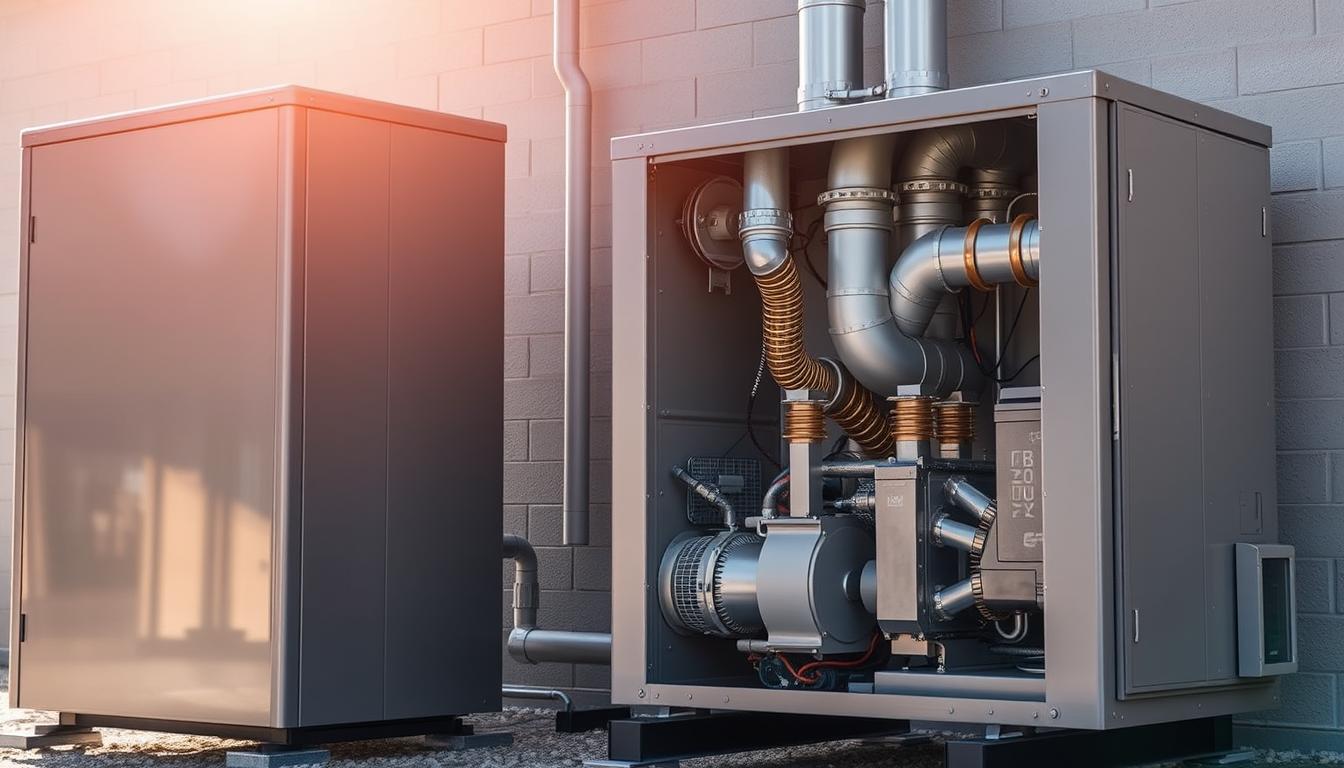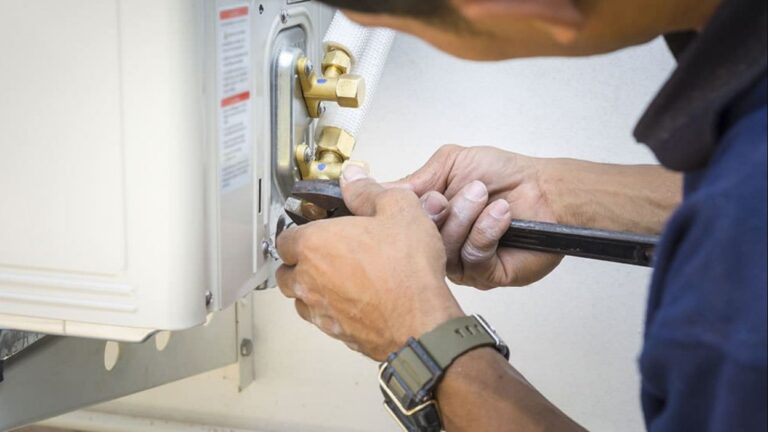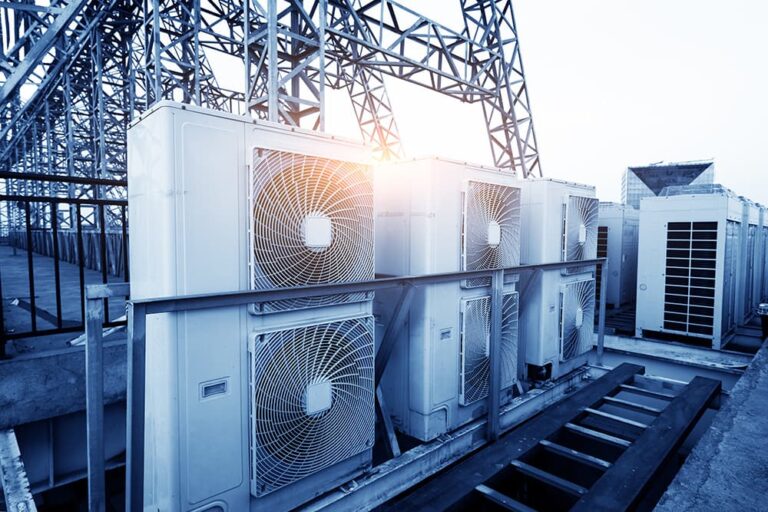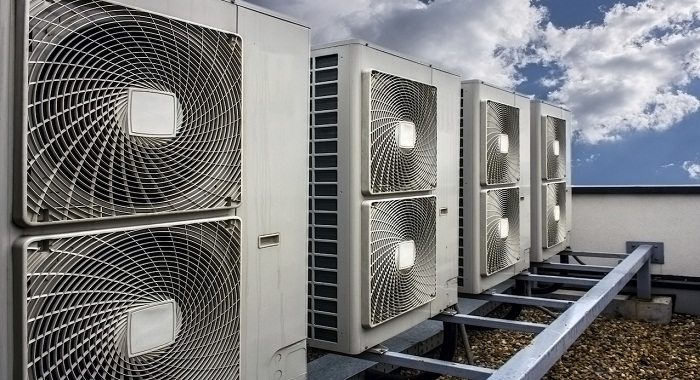Heat Pump Not Working? Common Problems and How to Fix Them
Heat pumps are versatile HVAC systems that efficiently heat and cool homes without relying on burning fuels or expensive electric heating. They transfer heat between outside air and indoor air, working in both heating and cooling modes.
When your heat pump stops working properly, it can be frustrating, especially during extreme weather conditions. Understanding the basics of how heat pumps work can help homeowners identify issues more effectively.
Many common problems can be diagnosed and sometimes fixed without immediately calling a professional. This article will cover main issues, including heating problems, cooling issues, electrical failures, and frozen units.
Key Takeaways
- Understand how heat pumps work to identify common problems.
- Diagnose and fix common heat pump issues without calling a professional.
- Recognize when to call a professional for safety and to prevent further damage.
- Regular maintenance is key to preventing many common heat pump problems.
- Common issues include heating problems, cooling issues, electrical failures, and frozen units.
Understanding Your Heat Pump System
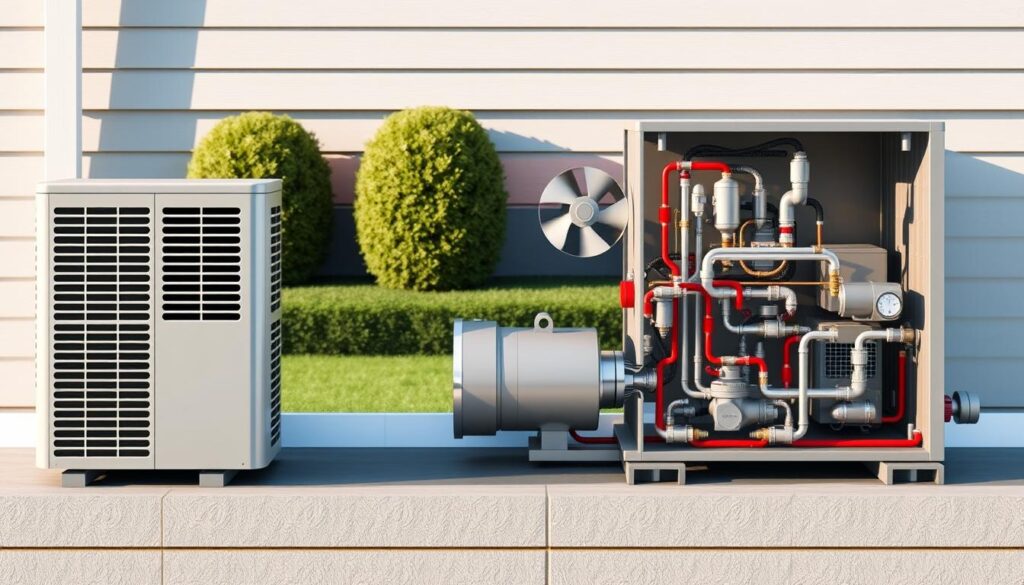
Understanding the basics of your heat pump system is essential for identifying and fixing common problems. A heat pump is an energy-efficient alternative to traditional heating and cooling systems, transferring heat between the outside air and the air inside your home.
How Heat Pumps Work
Heat pumps operate by transferring heat from one location to another, rather than generating heat. In heating mode, they extract heat from the outside air and bring it inside your home. Conversely, in cooling mode, they remove heat from inside your home and release it outside. This process is made possible by the refrigeration cycle, which involves the refrigerant absorbing and releasing heat.
Key Components and Their Functions
The key components of a heat pump system include the compressor, condenser, evaporator, and expansion valve. The compressor pressurizes the refrigerant, while the condenser releases heat. The evaporator absorbs heat, and the expansion valve regulates the flow of refrigerant. Understanding these components and their functions can help you better troubleshoot issues with your heat pump unit and maintain the desired temperature in your home.
Signs Your Heat Pump Needs Attention
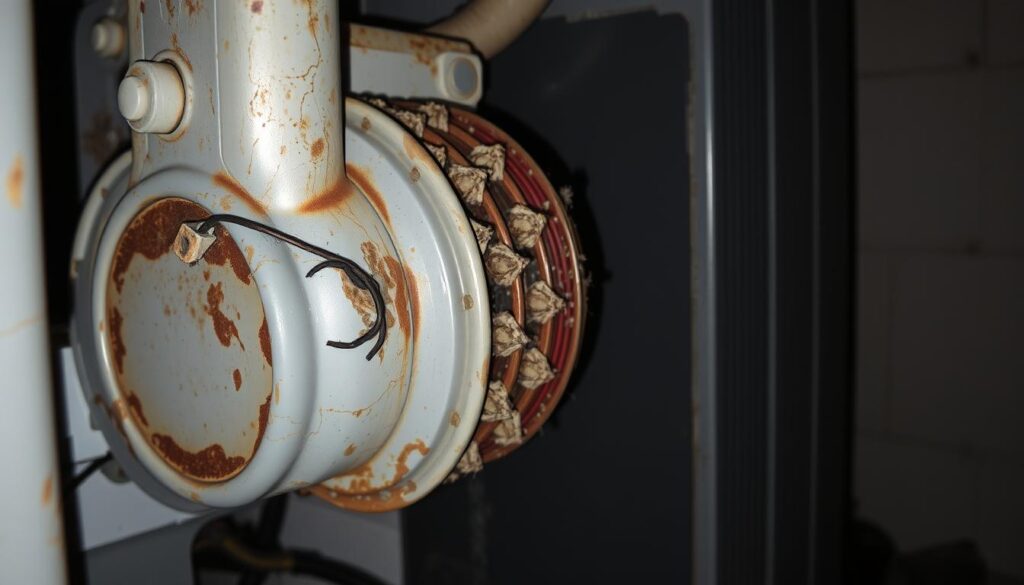
Recognizing the warning signs of a failing heat pump is crucial for timely intervention. Your heat pump is a vital component of your home’s heating and cooling system, and ignoring its distress signals can lead to more severe problems and costly repairs.
Performance Issues
One of the primary indicators that your heat pump is not functioning correctly is a decline in its performance. This can manifest as insufficient heating or cooling, temperature fluctuations, or the system running continuously without reaching the desired temperature. If you notice that your energy bills are increasing without a corresponding increase in usage, it could be a sign that your heat pump is working harder than it should be due to an underlying issue.
Unusual Noises and Smells
Unusual noises can be a clear indicator of specific problems with your heat pump. For instance, grinding or scraping sounds might suggest metal components rubbing against each other, while clicking noises could indicate electrical issues. Rattling sounds often point to loose parts, and hissing or bubbling noises may signal refrigerant leaks. Similarly, strange odors can indicate various problems: musty smells might suggest mold in the ductwork, burning smells could indicate electrical issues or dust burning off, and chemical odors often point to refrigerant leaks. For more information on maintaining your heat pump, you can check out this guide on how to clean an HVAC compressor.
Visual Indicators of Problems
Visual signs can also indicate that your heat pump needs attention. Ice buildup on the outdoor unit, water leaks, visible damage to components, or excessive vibration are all red flags. The indoor air handler might also show signs of issues through reduced airflow, uneven heating or cooling, or excessive dust accumulation. Addressing these warning signs early can prevent more serious damage and costly repairs to your heat pump system.
Heat Pump Not Heating Properly

One of the most prevalent complaints about heat pumps is their failure to provide adequate heating when needed most. If your heat pump system is blowing cold air or room temperature air while the thermostat is set for heat mode, there are several potential causes to investigate.
Thermostat Settings and Configuration
First, check your thermostat settings to ensure it’s set to “heat” mode and at an appropriate temperature. Verify that the batteries are working if it’s battery-powered. The location of your thermostat can also affect performance; it should be away from drafts, sunlight, and heat sources. Improper calibration might cause heating issues, so it’s worth checking if your thermostat is accurately reading the room temperature.
Reversing Valve Issues
The reversing valve is a critical component that allows your heat pump to switch between heating and cooling modes by changing the direction of refrigerant flow. A stuck or faulty reversing valve can leave your system blowing cold air even when set to heat. Symptoms of reversing valve failure include the system getting stuck in one mode. This issue typically requires professional repair.
Low Refrigerant Levels
Low refrigerant levels can prevent your heat pump from producing enough heat. A low refrigerant charge reduces the system’s ability to transfer heat effectively, decreasing its heating capacity and efficiency. Refrigerant leaks not only reduce performance but can also damage the compressor if left unaddressed. Handling refrigerant requires professional certification, so if you suspect low refrigerant levels, it’s best to call an HVAC technician.
Additionally, some heat pump systems have auxiliary heat strips that might not engage in extremely cold weather, which could be a separate issue. Ensuring that your system is properly maintained and addressing any issues promptly can help restore your heat pump‘s heating performance.
Heat Pump Not Cooling Effectively
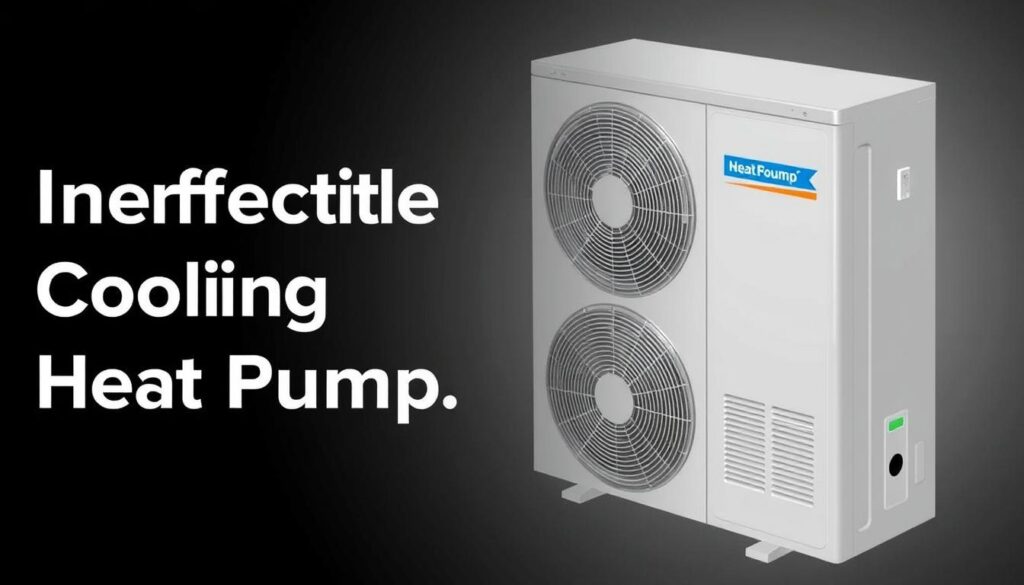
If your heat pump is not cooling properly, it’s essential to identify the root cause among several potential factors. While some issues may overlap with heating problems, cooling inefficiencies often have distinct causes.
Airflow Restrictions
One of the primary reasons for a heat pump’s cooling inefficiency is restricted airflow. The most common and easily fixable restriction is a dirty air filter. Checking and replacing air filters every 1-3 months can dramatically improve your heat pump’s performance. Dirty air filters not only reduce cooling efficiency but also increase energy consumption.
Other potential airflow restrictions include blocked vents, dirty coils, fan problems, and duct issues. These may require professional cleaning or repair to restore optimal airflow.
Refrigerant Problems
Refrigerant issues can significantly impact your heat pump’s cooling capacity. Symptoms of refrigerant problems in cooling mode include warm air from vents, ice formation on the indoor coil, and hissing sounds. Proper refrigerant charge is critical for effective cooling, and both overcharging and undercharging can cause problems.
Compressor Issues
The compressor is a crucial component of your heat pump, and issues with it can severely affect cooling performance. Compressor problems can stem from electrical issues, mechanical failures, or overheating. Warning signs of compressor failure include hard starting, tripping breakers, unusual noises, and reduced cooling capacity. Compressor repairs or replacement typically require professional HVAC service and can be among the more expensive heat pump repairs.
Heat Pump Troubleshooting: Electrical and Power Problems
Electrical issues are a common cause of heat pump failure, and addressing them requires a systematic approach to troubleshooting. When your heat pump isn’t working, it’s essential to check the electrical and power components to identify the root cause of the problem.
Heat Pump Won’t Turn On
If your heat pump won’t turn on, the first step is to check the thermostat settings. Ensure that it’s set to the correct mode and temperature. Next, inspect your home’s electrical panel for a tripped circuit breaker or blown fuse. If your indoor and outdoor units are on separate breakers, check both.
Checking the Circuit Breaker: If you find a tripped breaker, try resetting it. If it trips again immediately, this indicates a more serious electrical issue that requires professional attention.
Circuit Breaker Issues
Circuit breaker issues can be a significant problem for heat pump operation. A tripped breaker can cut power to your unit, causing it to malfunction. Regularly check your circuit breaker panel to ensure that the breakers controlling your heat pump are not tripped.
Faulty Wiring and Capacitor Problems
Faulty wiring and capacitor issues can also cause problems with your heat pump. A burnt or disconnected wire can prevent your air handler from functioning correctly. Similarly, a defective capacitor can cause your unit to hum but not start or operate intermittently.
Common Capacitor Issues: If your heat pump’s capacitor is faulty, you may notice symptoms such as the unit humming but not starting or intermittent operation. These issues require professional diagnosis and repair.
| Issue | Symptoms | Solution |
|---|---|---|
| Tripped Circuit Breaker | Heat pump won’t turn on | Reset breaker, check for underlying issues |
| Faulty Wiring | Intermittent operation, component damage | Inspect and repair wiring |
| Capacitor Failure | Unit hums but doesn’t start, intermittent operation | Replace capacitor |
Electrical problems can lead to other issues with your heat pump, so it’s crucial to address them promptly. If you’re unsure about any aspect of troubleshooting or repair, it’s always best to consult a professional HVAC technician to ensure your safety and the proper functioning of your heat pump.
Dealing with Frozen Heat Pumps and Outdoor Unit Problems

As temperatures drop, it’s not uncommon for heat pumps to accumulate ice on their outdoor units. While a little frost is normal during winter operation, excessive ice buildup can significantly reduce your heat pump’s efficiency and effectiveness.
Normal vs. Problematic Ice Buildup
A light coating of frost on the outdoor coil is normal during winter. However, if the ice becomes thick and persistent, it’s a sign of a problem. Ice on the coil impedes airflow and greatly reduces the heat pump’s effectiveness. Understanding the difference between normal frost formation and problematic ice buildup is crucial for maintaining your heat pump’s performance.
Defrost Cycle Failures
Modern heat pumps are equipped with a defrost mode designed to clear frost buildup from the outdoor unit at predetermined intervals. If this defrost cycle fails or malfunctions, the outdoor unit may freeze over, leading to reduced performance. For more detailed information on troubleshooting heat pump issues, you can visit Carrier’s heat pump troubleshooting guide.
Clearing Debris and Ensuring Proper Airflow
Keeping the outdoor unit clear of debris, vegetation, and snow is essential for maintaining proper airflow. Ensure there is adequate clearance around the unit, typically 18-24 inches on all sides. Regularly check the outdoor fan operation and clean the outdoor coil gently to prevent damage to the delicate fins. Proper maintenance of the outdoor unit is crucial for both heating and cooling performance, especially during extreme weather conditions.
When to Call a Professional HVAC Technician
Resolving heat pump problems efficiently often requires the expertise of a qualified HVAC technician. While some issues can be addressed by homeowners, many problems are best diagnosed and repaired by a professional to ensure safety and efficiency.
Homeowners can handle simple troubleshooting, such as checking thermostat settings or resetting circuit breakers. However, complex issues like refrigerant leaks, compressor failures, or electrical problems beyond simple breaker resets should be left to certified professionals. Attempting to fix these issues without proper training can void warranties, cause additional damage, or create safety hazards.
You should call a professional if you experience complete system failure, burning smells, loud noises, or repeated breaker trips. To find a qualified HVAC technician, look for proper licensing, insurance, and manufacturer certifications. Before calling, gather information about your system’s make, model, and the specific issues you’re experiencing to help the technician diagnose the problem more efficiently.
Regular professional maintenance can prevent major issues and extend the life of your heat pump system. Investing in professional service when needed can save you money in the long run by preventing more extensive damage.

